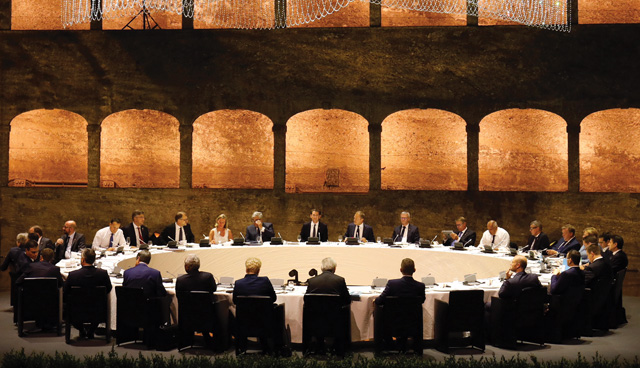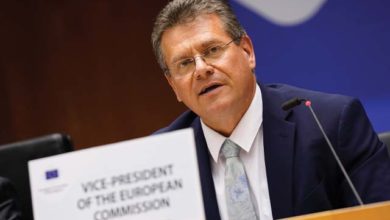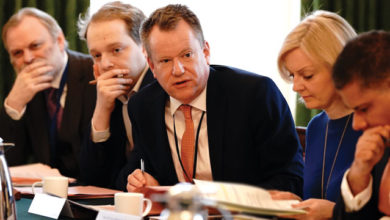Brexit: Where are we now?

As the Brexit negotiations reach a critical phase, Owen McQuade reflects on the current state of the negotiations in which the border has proved to be the final stumbling block for a withdrawal agreement.
While political strife continues to colour the media reporting of negotiation progress, it’s worth noting the emergence of greater clarity around the withdrawal agreement, of which 87 per cent of content has now been agreed.
Progress has been made in all four areas defined in the legal text of the agreement:
1. Citizens’ rights: The rights of the 3.8 million EU citizens living in the UK and the 1.3 million UK citizens living in EU countries;
2. The financial settlement or ‘divorce bill’ of €39 billion;
3. The two-year transition period during which everything will remain as present; and
4. The impact on the border on the island of Ireland post-Brexit.
The majority of that which has not been agreed centres around the border, but despite the current impasse, there has been some agreement on the ‘Irish question’. It has been agreed that the Common Travel Area will continue to operate after the UK leaves the EU. This agreement extends an existing bilateral agreement between the UK and the Republic of Ireland and solves many of the issues for Irish and British citizens around travel, work, healthcare etc.
However, it does not solve the issues for EU citizens in Ireland moving to the UK. The Irish economy is made up of workers of 200 different nationalities and post-Brexit there are questions around whether Irish citizens will be able to move freely between Ireland and Great Britain; but other EU nationals may not. This has not achieved the same media profile as issues around goods.
The Irish Government has stated that any deal must respect the Good Friday Agreement (GFA) “in full”. Those born in Northern Ireland under the GFA have the right to hold either a British or Irish passport, or both. Holding an Irish passport gives the holder EU citizenship, but this is not the same as residency in the EU and many questions remain unanswered.
The Irish Government has highlighted the fact that it has identified 240 areas of North-South co-operation on the island of Ireland. Around 150 of these are seamless under the GFA, with both Northern Ireland and the Republic of Ireland currently in both the customs union and the single market. Another key sector to the economy on the island is agriculture and food production. As part of Brexit, the UK is leaving the Common Agriculture Policy (CAP) and this will have a huge impact on the heavily-reliant agri-food sector on the island.
Although all parties, publicly, insist that there should be no hard border on the island of Ireland, this is the most difficult issue still to be resolved. It is the simple fact that goods using different customs unions must be checked. The ‘backstop’ in the withdrawal agreement ensures regulatory equivalents for goods so that the customs union and single market can function on the island. Although, it was believed that the backstop was agreed in December 2017, the UK Government now doesn’t want a Northern Ireland-specific backstop. The latest UK Government position seeks a UK-wide customs element with the backstop for all the UK to remain within the customs union. It also acknowledges the need for some Northern Ireland specific regulatory alignment.
Although most of the focus has been on the customs union, access to the single market is a separate issue and is equally important. The four freedoms of the single market do not equate to the customs union. For example, Norway is in the single market, accepting the free movement of people, but is not in the customs union. And, whilst much is being made of the political symbolism of customs checks between Northern Ireland and Great Britain, there already exists checks on live animals between Northern Ireland and Great Britain, with 10 per cent of animals being inspected.
Salzburg
A feature of the Brexit negotiations has been the British Government’s inept negotiating as displayed at the informal meeting of the European Council, which took place in Salzburg on 19-20 September 2018. Ahead of the meeting European Union President Donald Tusk wrote to the participating heads of states welcoming Theresa May’s Chequers proposals. However, following dinner, where Prime Minister May delivered a 10-minute talk to the EU27 leaders on her proposals, Tusk described May’s approach as being “surprisingly tough and in fact uncompromising”.
She then met Taoiseach Leo Varadkar the following morning, informing him that she doubted if proposals on the Irish border could be brought forward before the October deadline. The outcome of the May-Varadkar breakfast caused some unease amongst the EU27, with French President Emmanuel Macron particularly exercised by May’s rebuke to the Taoiseach. The lunch later that day had Macron in an uncompromising mood and following what the FT described as a ‘mauling’ in Salzburg, May left early. It was portrayed as a humiliation of the British Prime Minister, but one of her own making. Expectations amongst British officials were high and, not for the first time, they thought they could easily dismiss Irish concerns.
The day after the Salzburg Summit Theresa May spoke at Downing Street and accused the EU of not treating her with respect and indicated her opposition to the backstop, stating it was unacceptable for Northern Ireland to remain in the customs union.
The fallout from Salzburg put pressure on May at this year’s Conservative Party conference but with her ‘dancing queen’ routine, and despite Boris “running through wheat fields”, this pressure did not materialise. Together with a supportive BBC commentary – Laura Kuenessberg’s gushing report on the leader’s speech at the conference – this gave her renewed confidence to propose a modified Chequers deal.
Chequers 2.0
At the time of writing, Theresa May’s revised Chequers proposal has not yet been published but the broad thrust has been well trailed by Downing Street spokespersons. The UK wants to maintain an invisible border in Ireland by committing Britain long-term – and maybe even permanently – to membership of the customs union. In addition, the UK is prepared to align Northern Ireland to single market rules. Keeping Northern Ireland in the single market for goods means having different rules on either side of the Irish Sea; this goes directly against Arlene Foster’s ‘blood red’ line.
To fudge this, British officials believe that a political declaration on the future trade framework will allow May to argue that the Northern Ireland backstop will never be used. The Department for Exiting the European Union has not always had a sure touch when it comes to Northern Ireland. A prime example of which is shown that in preparing the Technical Notes for a no-deal Brexit they chose to ignore a submission from the PSNI that any hard border should be avoided from a security perspective and counter this with “we can always send in the army”.
In addition to keeping the DUP happy, May will have to sell Chequers 2.0 in the Commons. This could prove as difficult as there is clear political advantage for Labour and the SNP with its 35 MPs looking to reject any sort of deal. And then is also the Boris Johnson/Rees-Mogg faction to contend with.
Never a dull moment…





